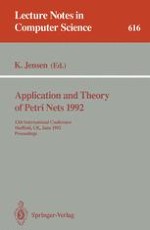This volume contains the proceedings of the 13th International Conference onApplication and Theory of Petri Nets, held in Sheffield, England, in June 1992. The aim of the Petri net conferences is to create a forum for discussing progress in the application and theory of Petri nets. Typically, the conferences have 150-200 participants, one third of these coming from industry and the rest from universities and research institutions. The 1992 conference was organized by the School of Computing and Management Sciences at Sheffield City Polytechnic, England. The volume contains twoinvited papers, by G. Balbo and W. Reisig, 18 submitted papers, and seven project papers. The submitted papers and project presentations were selectedby the programme committee and a panel of referees from a large number of submissions.
